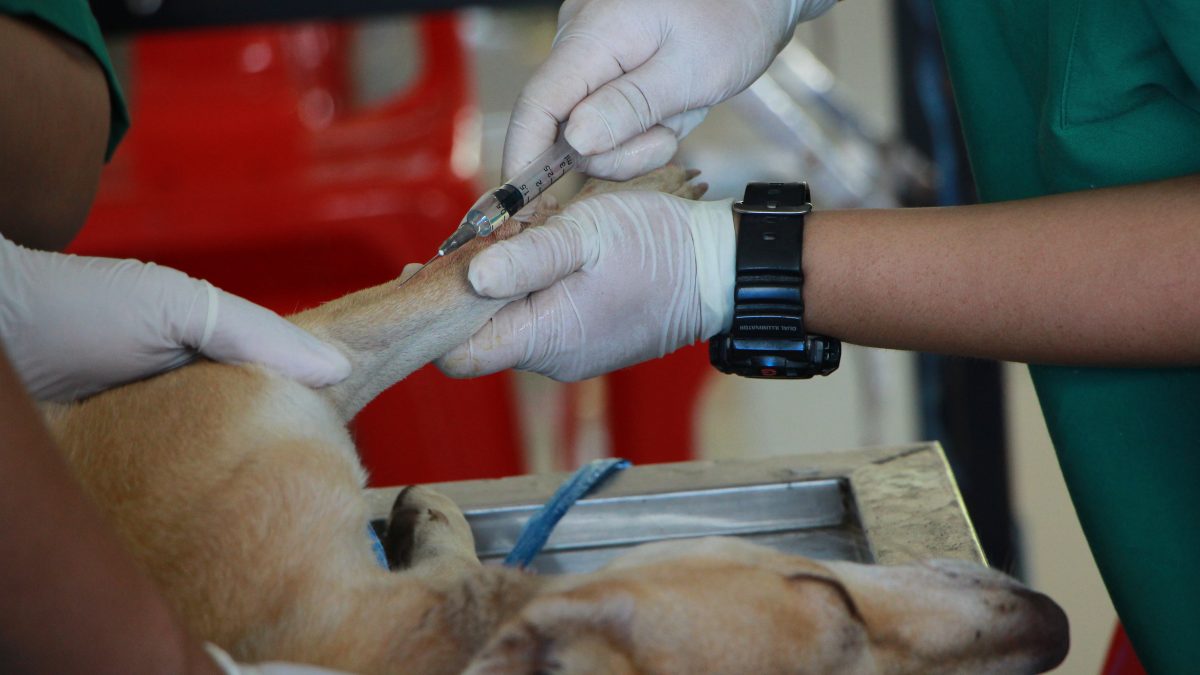If it seemed like everyone and their dog was adopting a pet during the pandemic, it’s because they were. A Canadian study commissioned by retailer Pet Valu showed that between early 2020 and late 2021, three million pets were adopted and 30 per cent of pet owners added another pet to their households.
“The pandemic just catapulted the numbers of dogs, cats and, to some degree, horses into the stratosphere,” says Renate Weller, Dean of the Faculty of Veterinary Medicine at the University of Calgary. For a time, rescue groups were overrun by applications for adoptable dogs and dog breeders had long wait-lists for puppies.
But as the demand for veterinary care has grown, the number of veterinary professionals – both veterinarians and veterinary technologists – has not. In fact, it has continued to shrink, following a long-established global trend. According to a 2021 workforce study by the Alberta Veterinary Medicine Association (ABVMA) and Alberta Veterinary Technologist Association (ABVTA), poor retention is a big reason for the shortage.
“It used to be that vets worked 80 hours a week, without fail. That’s not a healthy working pattern."
For veterinarians, the attrition rate is about six per cent, including the three per cent of veterinarians who retire each year. The other three per cent is tricky to determine, but likely includes a mix of those who’ve left the profession and those working elsewhere in the animal health industry (in positions that don’t require a licence).
Weller says the impact of the attrition rate has been compounded by the fact that new veterinarians work less than their predecessors. “It used to be that vets worked 80 hours a week, without fail,” she says. “That’s not a healthy working pattern and the new generation recognizes that and asks for sensible working hours.”
All of this translates to a high vacancy rate in veterinarian jobs in both urban and rural centres. The 2021 workforce study reported that 16.7 per cent of veterinarian jobs were unfilled, substantially higher than the province’s overall job vacancy rate of 2.6 per cent.
However, it’s still less severe than the 18.8 per cent vacancy rate in veterinary technologist jobs. Comparable to nurses in human medicine, veterinary technologists do everything from performing laboratory tests and evaluating clinical symptoms, to preparing animals for surgery and monitoring anesthesia. Although a critical part of any veterinary practice, veterinary technologists have an attrition rate of eight per cent, according to the 2021 study.
Vanessa George, executive director of the ABVTA, says the profession’s low wages are a big reason why technologists aren’t sticking around. “What we’re seeing from a veterinary technologist point of view is that the cost of living is going up, but wages are not going up,” she says. According to job-search site Indeeed, the veterinary technician job pays an average of just under $23/hour in Canada. The profession is predominantly made up of women, including many with children who can no longer afford childcare. “They’re often choosing to stay at home or find a new profession,” she says. George says there isn’t research on the industries or professions they pursue, but she knows of many who’ve left for careers in human healthcare.
When it comes to wages, “it’s really a delicate balance,” she says. While all vet techs deserve to be paid fairly, owners of veterinary clinics must contend with inflation costs and reluctance from consumers to pay the rising costs of vet care. So, while demand for veterinary care is high, it doesn’t necessarily mean more money in the pockets of clinic owners, which makes wage increases tricky.
Both professional organizations argue that Alberta needs to be producing more graduates to help meet the demand – and perhaps more than may have been needed in previous generations. George notes that, like veterinarians, the next generation of veterinary technologists expect a reasonable work-life balance. “We’re seeing that it’s taking essentially two new graduates to fill the schedule of one,” she says.
Increasing the number of veterinarians from Alberta’s only vet school – which currently produces just 50 grads each year – is also critical, says Weller. After lobbying the Alberta government for years, the University of Calgary was promised a funding increase earlier this year that will allow it to double its graduates over the next three years.
Of course, increasing graduates won’t do much if they don’t remain in the profession. According to the Canadian Veterinary Medical Association, about 30 per cent of veterinarians and 50 per cent of veterinary technicians are in the advanced stages of burnout. “Veterinary medicine is not an easy job. We have the dubious honour of being the profession with the highest suicide rates,” Weller says. “It’s an extremely stressful job and you have to make decisions about life and death on a daily basis.”
As industry addresses the shortage with advanced education, retention strategies, and immigration, Weller urges the public to be gentle with animal healthcare providers.
“I can assure you that every single veterinarian and every single veterinary technologist is running as fast as they can and working as fast as they can.”
Savvy AF. Blunt AF. Edmonton AF.




